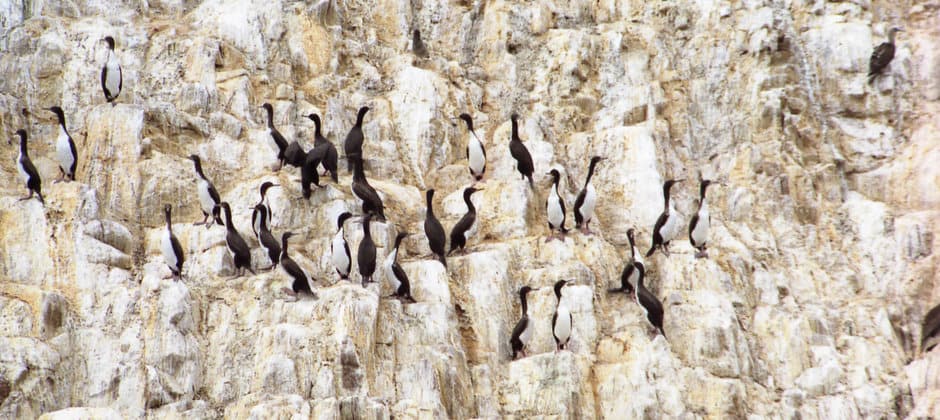Share this article
Poop may be reason No. 2 to conserve seabirds
Seabird poop is so rich in nutrients, its annual value to ecosystems — and to people — makes up nearly half a billion dollars, researchers found. But as seabird numbers are falling, the quantity of droppings is dropping, too.
“Seabird nutrient deposit through their poop has a crucial role in marine and coastal ecosystems,” said Daniel Plazas-Jiménez, a PhD student at the Federal University of Goiás in Brazil. “However, because seabird species are heavily threatened, this function — nutrient deposition — is threatened too.”
In a study published in Trends in Ecology and Evolution, Plazas-Jiménez and co-author Marcus Cianciaruso set out to put a monetary value on seabird excrement to get the public and policymakers more involved in seabird conservation. One way to make people care, he said, is to show people the link between conserving seabirds and the benefits they provide.
Seabird guano is rich in nitrogen and phosphorus, making it once a common fertilizer for crops worldwide. Only a few species, like the Guanay cormorant (Leucocarbo bougainvillii) of Peru, produce guano, and though they were once prized for their poop, Plazas-Jiménez said, “the perception about the importance of seabirds for the general public decreased. Probably, today, most people never heard about the Guanay cormorant.”
After estimating the annual global production from seabirds that do produce guano, Plazas-Jiménez and Cianciaruso used its market price and came up with a $19.4 million-a-year contribution. For seabirds that don’t produce guano, the researchers estimated the annual value of their nitrogen and phosphorous deposits by calculating how much it would cost to replace them with inorganic fertilizer — another $454.4 million.
That’s a combined $473.8 million in nitrogen and phosphorous from seabirds a year — and that may be an underestimation, Plazas-Jiménez said. Seabird nutrient deposition can increase coral reef fish stocks, which are important for commercial fisheries. Taking that into account, the value of seabird poop can top $1 billion a year, he said.
Plazas-Jiménez said he hopes the research shows the importance in conserving and increasing seabird populations to maintain ecological functions. Penguins in particular contribute half of the nitrogen and phosphorous from seabirds each year, he said, but most of that comes from species that are declining. “These contributions should decrease in the future if no conservation action is taken,” Plazas-Jiménez said.
Climate change, bycatch from fishing and overfishing are the biggest threats to seabirds, he said. “Potentially, the effect of these threats on the contributions that seabird nutrient deposition made to our well-being is greater than previously thought,” he said.
But seabird poop is only one of the important roles that seabirds play in coastal and marine ecosystems, Plazas-Jiménez said. “Additional services are, for example, the fish stock regulation, the cultural value of seabirds to promote tourism and birdwatching,” he said. “If was possible to monetize all the ecosystem services that seabird species do ‘for free’ to us, the figures are certainly much higher.”
Header Image: Guanay cormorants were once highly valued for the fertilizer their guano provided. Credit: Ron Knight








